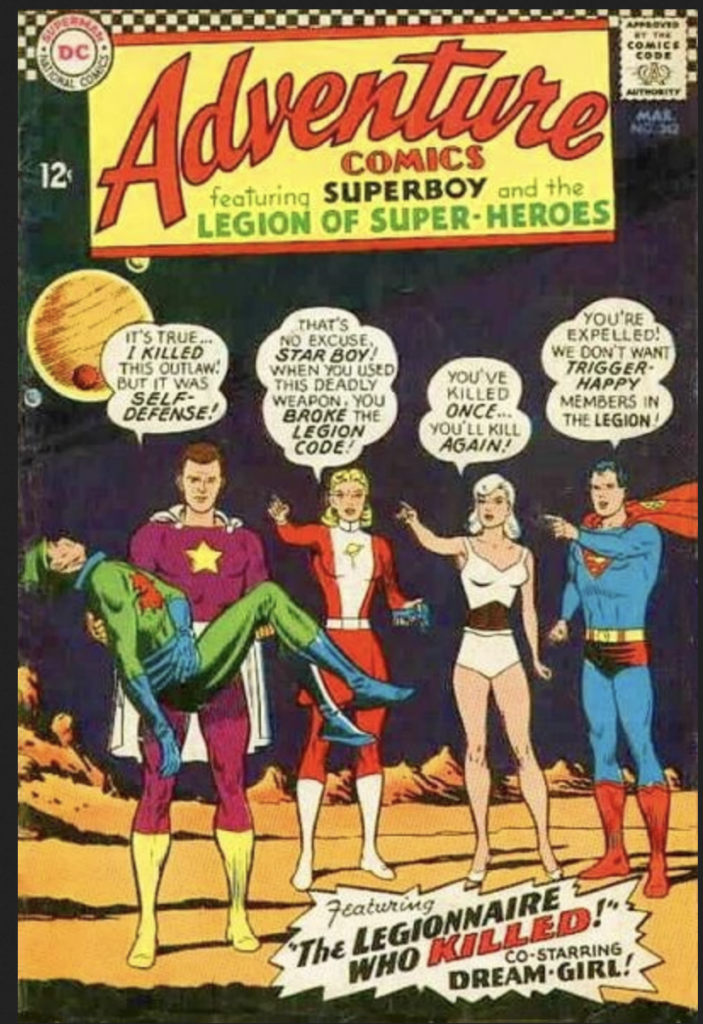From what little I know of Archie Comics’ 1950s series Katy Keene, the eponymous protagonist was a gorgeous girl involved in much the same romantic situations as most girl characters of the day. What made her stand out, however, was having readers submit designs for her clothes, cars and interior decor. Unsurprisingly this proved wildly popular.

At the end of the Silver Age, DC gave the idea a shot.
As I’ve mentioned before, lots of stuff I read in the 1960s, in comics and out of them, had a timeless quality; even though a lot of it was written before I was born, it didn’t seem anachronistic. At the end of the decade, that quality seemed to collapse. Long-running book series, from mysteries to kids’ books, tried to acknowledge they weren’t living in the same era with the same attitudes as when the series launched.
It didn’t always work. As the great fantasy/science fiction writer Fritz Leiber once put it, changing your writing style to keep up with changing times is tricky. If, say, it’s becoming more acceptable to write sexy stuff in your book, keeping your stories chaste makes you look hopelessly old-fashioned; misreading the room and putting in too much sex makes you look offensive.
Comics, of course, had the added burden of being a visual medium: if clothes and styles are hopelessly out of date, it’s much more obvious. Much as I like Steve Ditko’s Shade, the Changing Man, his mobsters look like they stepped out of the 1950s. It’s worse with women as women’s fashions have always changed more. Al Plastino’s cover for Lois Lane’s 1957 Showcase debut shows her like this —

— and she’d stay that way until 1968, when Curt Swan and Neal Adams updated her look.

Just a couple of years later Saturn Girl got a makeover too, from the costume seen here —

— to the one introduced in Action Comics #392, “The Legionnaires Who Never Were.”

As detailed at Comic Book Revolution, updating her look wasn’t an editorial project: LSH fan Kim Metzger disliked Saturn Girl’s costume and submitted the redesign on his own initiative. It was, apparently, unpopular at the time, but it stuck around; eventually lots of the Legionnaires would get redesigns, with most of the women showing a lot more skin.
Oh, for anyone who’s curious, the story (Cary Bates, J. Winslow Mortimer) has Saturn Girl and Projectra knocked out while on a mission. When they wake up and return home, the Legion has no record they existed — heck, they’re just poor knockoffs of the newest male members, Prince Projectur and Saturn Lad. Bates’ script lampshades the standard solutions (parallel world, hallucination) before revealing the Legion’s testing Projectra because of a computer prediction she’ll crack under pressure (that kind of thing is also standard, of course).

If you read the footnote on that Saturn Girl panel, you know Supergirl also got a new look, also including submissions from readers.



#397 was the issue Mike Sekowsky not only took over writing and drawing but editing. Of course he was used to showing hip fashion over in Wonder Woman
 —so I’m surprised he didn’t redesign Supergirl himself. Did he or someone else decide fan submissions would draw more attention from readers? Or was it that he wasn’t sure how to redesign the Maid of Might’s action uniform?
—so I’m surprised he didn’t redesign Supergirl himself. Did he or someone else decide fan submissions would draw more attention from readers? Or was it that he wasn’t sure how to redesign the Maid of Might’s action uniform?
As for the evil “Zond” mentioned on the cover, he’s an apparent demon recruiting Stanhope College students into his cult. Supergirl realizes she’s out of her league fighting magic so she turns to Diana Prince for help. Diana then turns to her former sparring partner, Morgan le Fay’s daughter Morgana. The sorceress scoffs until she hears the name “Zond”—

Diana’s really gotten into running a fashion boutique, hasn’t she?

Needless to say, Zond gets his butt kicked. I found Morgana interesting enough as a frenemy I wouldn’t have minded seeing her again, but that’s life as a comics fan.

